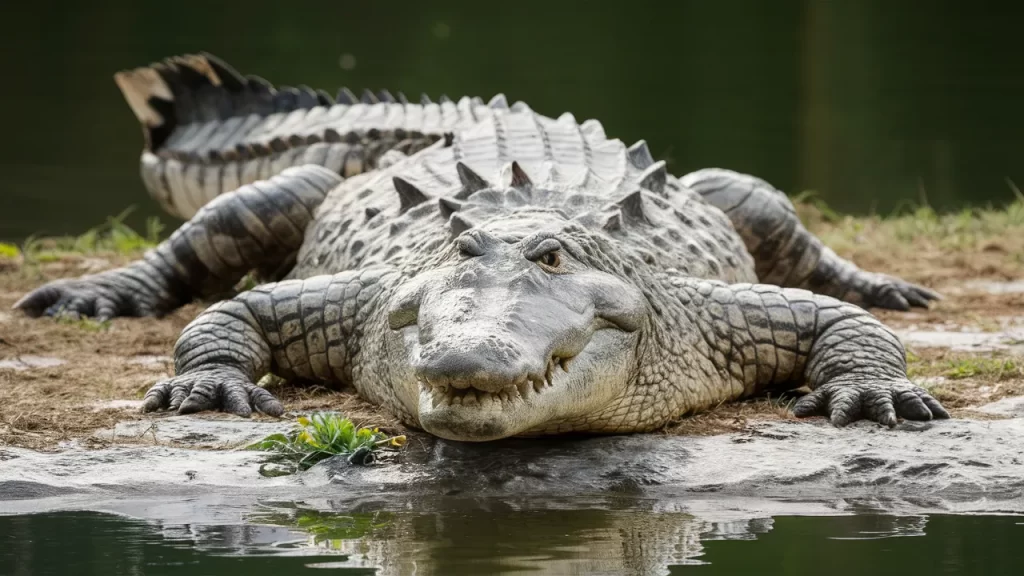Table of Contents
Costa Rica, known for its rich biodiversity, is home to the impressive American crocodile (Crocodylus acutus). These magnificent creatures play a vital role in the country’s ecosystem, but they also face challenges that threaten their existence. In this article, we delve into the habitat, behavior, and conservation efforts surrounding Costa Rica Crocodiles.
By understanding these aspects, we can appreciate the importance of protecting these iconic reptiles for future generations. Join us on this journey to explore the world of Costa Rican crocodiles and the efforts being made to ensure their survival.
Habitat and Distribution of Crocodiles in Costa Rica

The American crocodile (Crocodylus acutus) in Costa Rica thrives in a variety of habitats, primarily coastal and brackish areas along the Pacific coast. These crocodiles are known to inhabit mangroves, lagoons, estuaries, and rivers, showcasing their adaptability to different environments.
The species’ distribution in Costa Rica is notable, with significant populations in key areas like the Tempisque River and the Tárcoles River basins.
These regions serve as crucial habitats for the American crocodile, providing the necessary conditions for their survival and reproduction. The patchy distribution of suitable habitats within Costa Rica emphasizes the importance of conservation efforts to maintain and protect these vital ecosystems for the Costa Rica alligator’s continued existence.
This highlights the intricate relationship between the species and its habitat, underscoring the need for ongoing wildlife conservation initiatives in Costa Rica.
Does Costa Rica have Crocodiles?

Yes, Costa Rica has crocodiles! It is home to two distinct species: the American crocodile and the caiman.
Costa Rica American crocodiles: These are the larger of the two species, reaching lengths of up to 14 feet (4.3 meters). They can be found in both saltwater and freshwater environments, including rivers, lakes, and estuaries.
Costa Rica Caiman: These are smaller than American crocodiles, typically growing to only about 6.5 feet (2 meters) in length. They prefer freshwater habitats such as swamps and marshes.
Behavior and Diet of Costa Rica Crocodiles

The American crocodile, a formidable predator in Costa Rica, exhibits fascinating behavior and dietary habits that contribute to its ecological role. In the lush habitats of Costa Rica, these crocodiles display a mix of sunbathing routines for thermoregulation and swift agility during hunting.
Their behavior is a blend of tranquility and sudden bursts of activity, making them both captivating and formidable creatures in their environment.
When it comes to diet, American crocodiles are carnivores with a diverse palate. Their menu includes marine insects, small fishes, crabs, amphibians, and larger adults can consume a variety of water animals like snails, fishes, crustaceans, frogs, turtles, caimans, iguanas, water birds, and undersized mammals.
This dietary diversity showcases the adaptability and predatory prowess of the American crocodile in Costa Rica’s ecosystems.
Where to See Costa Rica Crocodile?
Costa Rica’s American crocodile thrives in coastal areas. The Tárcoles River, nicknamed “crocodile bridge,” is a popular spot for watching them. Other options include boat tours in the Tempisque River Basin, Palo Verde National Park, or Tortuguero National Park. Always follow your guide’s instructions for a safe and unforgettable experience.pen_sparktunesharemore_vert
Conservation Efforts
Conservation efforts for the American crocodile in Costa Rica have been ongoing to protect and recover the species populations. The International Union for Conservation of Nature (IUCN) lists the American crocodile as “Vulnerable” due to historic threats such as hunting, habitat loss, and pollution. However, recent surveys have shown signs of population recovery, particularly along the Pacific coast.
Organizations like SINAC (National System of Conservation Areas) are at the forefront of crocodile conservation in Costa Rica. Their efforts focus on protecting crocodile habitats, minimizing human-crocodile conflicts, and educating the public about responsible wildlife encounters.
Conservation initiatives include:
- Habitat protection measures to secure environments for crocodile populations, supporting the growth of crocodile numbers.
- Education campaigns to increase public awareness and minimize human-crocodile conflicts.
- Guidelines for emergency response during crocodile encounters, reducing incidents of crocodile-human interactions.
- Crocodile population surveys to monitor the status and recovery of the species.
Despite these efforts, conservationists face challenges such as habitat fragmentation, human-crocodile conflicts, and the need for continued public education and awareness. Maintaining the environmental conditions necessary for the survival of crocodile populations remains a priority for conservation efforts in Costa Rica.
Encounters and Attacks
Encounters and attacks between humans and American crocodiles in Costa Rica underscore the importance of caution and respect for these formidable creatures. The interactions, whether fatal or non-fatal, often occur during activities like swimming, fishing, or being near water bodies, especially in regions like the Central Pacific and Northern Pacific.
Understanding the behavior and habitat of crocodiles is crucial to minimizing human-crocodile conflicts and ensuring safety for both species.
Individuals need to exercise caution, avoid risky behaviors near crocodile habitats, and respect the natural environment to prevent potentially dangerous encounters. By promoting awareness and responsible behavior, we can coexist harmoniously with these magnificent reptiles in their native habitats.
Final words
In Final words, the American crocodile is an integral part of Costa Rica’s rich biodiversity, and its conservation is crucial for maintaining the delicate balance of the country’s ecosystems. By understanding these remarkable creatures’ habitat, behavior, and dietary needs, we can better appreciate the importance of ongoing conservation efforts.
As individuals, we can contribute to protecting American crocodiles by supporting conservation organizations, promoting responsible behavior near crocodile habitats, and spreading awareness about the significance of these iconic reptiles. Together, we can ensure a future where Costa Rica’s American crocodiles continue to thrive and inspire generations to come.












